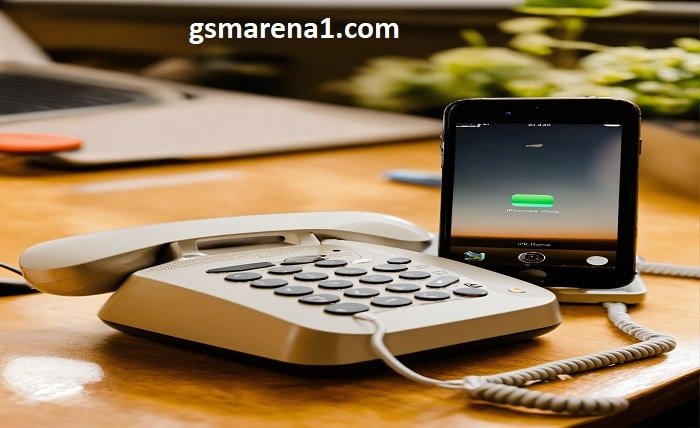In today’s tech-driven world, knowing the specifics of your smartphone can be incredibly useful. Whether you need to troubleshoot issues, buy accessories, or check compatibility for software updates, knowing your phone’s make and model is essential. This comprehensive guide will walk you through various methods to identify what kind of phone you have, ensuring you have all the information you need at your fingertips.
Why Knowing Your Phone Model Matters
Understanding your phone model is crucial for several reasons:
- Troubleshooting: Specific problems often have model-specific solutions.
- Software Updates: Ensures compatibility with the latest software updates and features.
- Buying Accessories: Helps in selecting the right accessories, such as cases and chargers.
- Warranty and Support: Necessary for warranty claims and customer support.
- Resale Value: Accurate model information affects the resale value of your phone.
These points highlight the practical benefits of knowing your phone model.
Checking the Settings
One of the simplest ways to identify your phone is through the device’s settings. Here’s how:
- Access Settings: Open the Settings app on your phone.
- Navigate to About Phone: Scroll down to find “About Phone” or “About Device.”
- View Model Information: Here, you’ll find information like the model name, number, and sometimes even the serial number and software version.
This method provides a straightforward way to access key information about your device.
Using the IMEI Number
The International Mobile Equipment Identity (IMEI) number is a unique identifier for your phone. Here’s how to use it:
- Find the IMEI Number: Dial *#06# on your phone to display the IMEI number.
- Check Online Databases: Enter the IMEI number on websites like IMEI.info to get detailed information about your device.
The IMEI number can provide specific details about your phone’s make and model.
Physical Inspection
Sometimes, a simple physical inspection can reveal important information about your phone. Here’s what to look for:
- Brand Logo: Most phones have the brand logo on the front or back.
- Model Number: Often printed on the back cover or under the battery.
- IMEI Sticker: Found on the phone’s box or under the battery cover.
This method is useful for identifying older or less common models.
Manufacturer Resources
Manufacturers often provide resources to help you identify your phone. Here’s how to use them:
- Official Websites: Visit the manufacturer’s official website and look for support or product information sections.
- Customer Support: Contact customer support for assistance with identifying your phone model.
These resources are reliable and provide accurate information.
Using Third-Party Apps
Several third-party apps can help you determine your phone’s model and specifications. Here are some popular options:
- CPU-Z: Provides detailed information about your device’s hardware and software.
- AIDA64: Offers comprehensive details about your phone, including the model number, chipset, and more.
These apps are user-friendly and often provide additional useful information about your device.
Checking the Box and Documentation
If you still have the original packaging and documentation, you can find valuable information there. Here’s what to look for:
- Model Information: Printed on the box or included in the user manual.
- IMEI and Serial Numbers: Often listed on the box and can be used to look up further details.
This method is particularly useful if you have kept all the original materials.
Using Carrier Resources
Your mobile carrier can also help identify your phone. Here’s how:
- Carrier Website: Log in to your account on the carrier’s website to view details about your phone.
- Customer Service: Contact your carrier’s customer service for assistance with identifying your phone model.
Carriers often have detailed records of the devices they sell and support.
Researching Online
If other methods fail, you can always resort to online research. Here’s how:
- Identify Key Features: Note distinctive features of your phone, such as camera placement, button layout, and design.
- Search Images and Specs: Use these features to search online images and specifications databases.
This method is less precise but can still provide useful information.
Your Phone’s Specifications
Knowing your phone’s specifications is as important as knowing the model. Here’s what to consider:
- Processor and RAM: Determines the phone’s performance capabilities.
- Storage Capacity: Indicates how much data you can store on your phone.
- Camera Specs: Important for photography enthusiasts.
- Battery Life: A key factor for daily usage.
Understanding these specifications can help you make the most of your device.
Conclusion
Identifying what kind of phone you have is easier than it might seem, with multiple methods available ranging from checking settings to using manufacturer resources. Understanding your phone’s model and specifications can help you troubleshoot issues, make informed purchasing decisions, and ensure compatibility with software and accessories. By following the steps outlined in this guide, you can accurately identify your phone and leverage that knowledge for a better user experience.
FAQ
1. What is the easiest way to find out what kind of phone I have?
The easiest way is to check the “About Phone” section in your settings, where the model name and number are usually listed.
2. Can I use the IMEI number to identify my phone model?
Yes, you can use the IMEI number to get detailed information about your phone’s make and model through online databases like IMEI.info.
3. Are there apps that can help me determine my phone’s model?
Yes, apps like CPU-Z and AIDA64 provide detailed information about your phone’s model, hardware, and software.
4. How does the serial number help in identifying the phone?
Manufacturers often encode the manufacturing date and model information within the serial number, which can be decoded to find out specific details about the phone.
5. Why is it important to know my phone’s specifications?
Knowing your phone’s specifications helps you understand its capabilities, troubleshoot issues, select compatible accessories, and assess its performance for various tasks.



